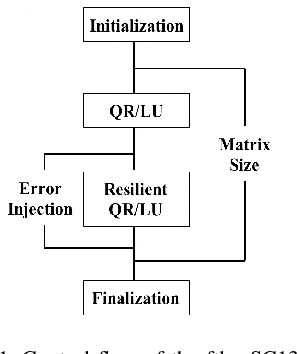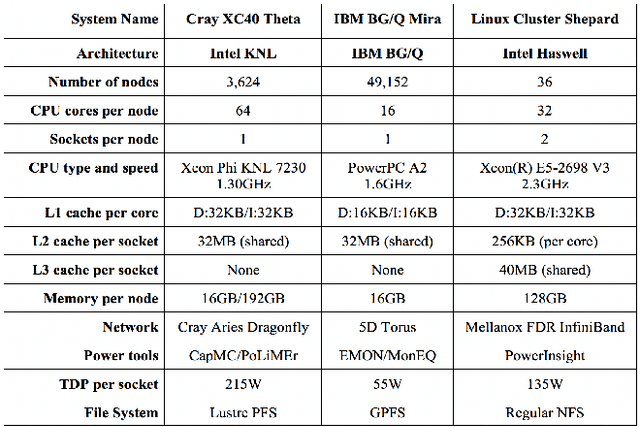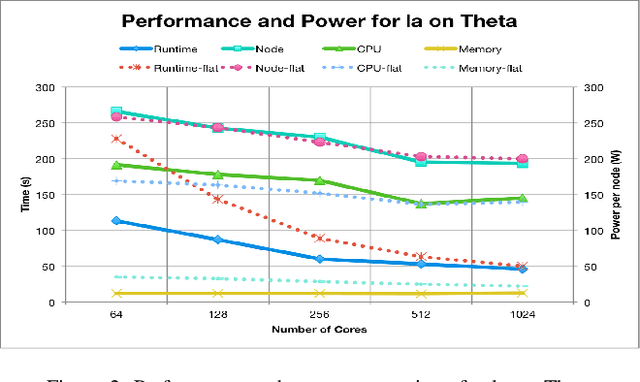Performance and Power Modeling and Prediction Using MuMMI and Ten Machine Learning Methods
Paper and Code
Nov 12, 2020



In this paper, we use modeling and prediction tool MuMMI (Multiple Metrics Modeling Infrastructure) and ten machine learning methods to model and predict performance and power and compare their prediction error rates. We use a fault-tolerant linear algebra code and a fault-tolerant heat distribution code to conduct our modeling and prediction study on the Cray XC40 Theta and IBM BG/Q Mira at Argonne National Laboratory and the Intel Haswell cluster Shepard at Sandia National Laboratories. Our experiment results show that the prediction error rates in performance and power using MuMMI are less than 10% for most cases. Based on the models for runtime, node power, CPU power, and memory power, we identify the most significant performance counters for potential optimization efforts associated with the application characteristics and the target architectures, and we predict theoretical outcomes of the potential optimizations. When we compare the prediction accuracy using MuMMI with that using 10 machine learning methods, we observe that MuMMI not only results in more accurate prediction in both performance and power but also presents how performance counters impact the performance and power models. This provides some insights about how to fine-tune the applications and/or systems for energy efficiency.
 Add to Chrome
Add to Chrome Add to Firefox
Add to Firefox Add to Edge
Add to Edge